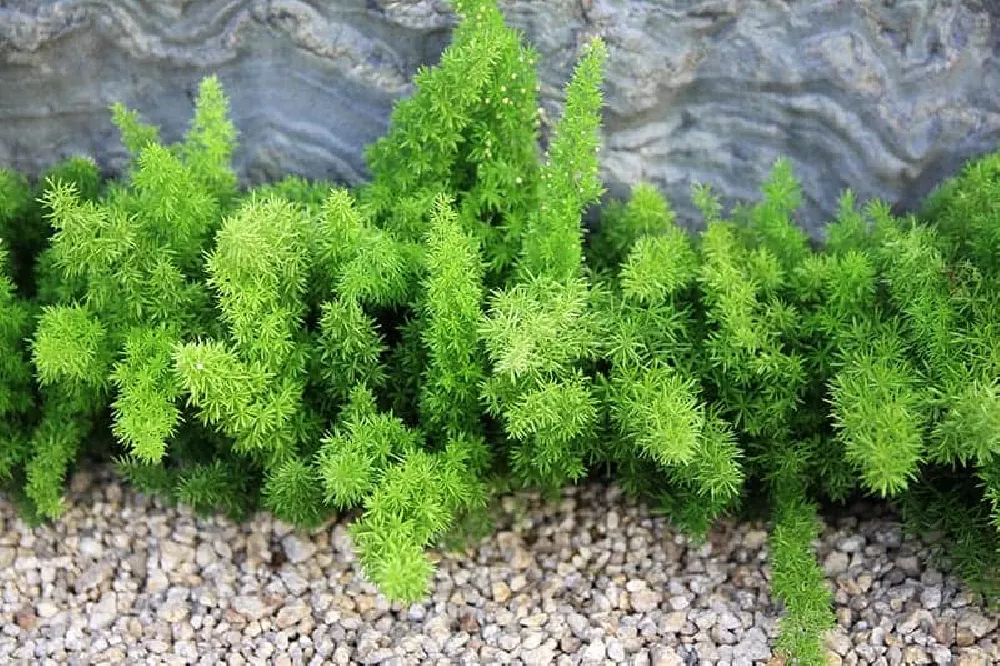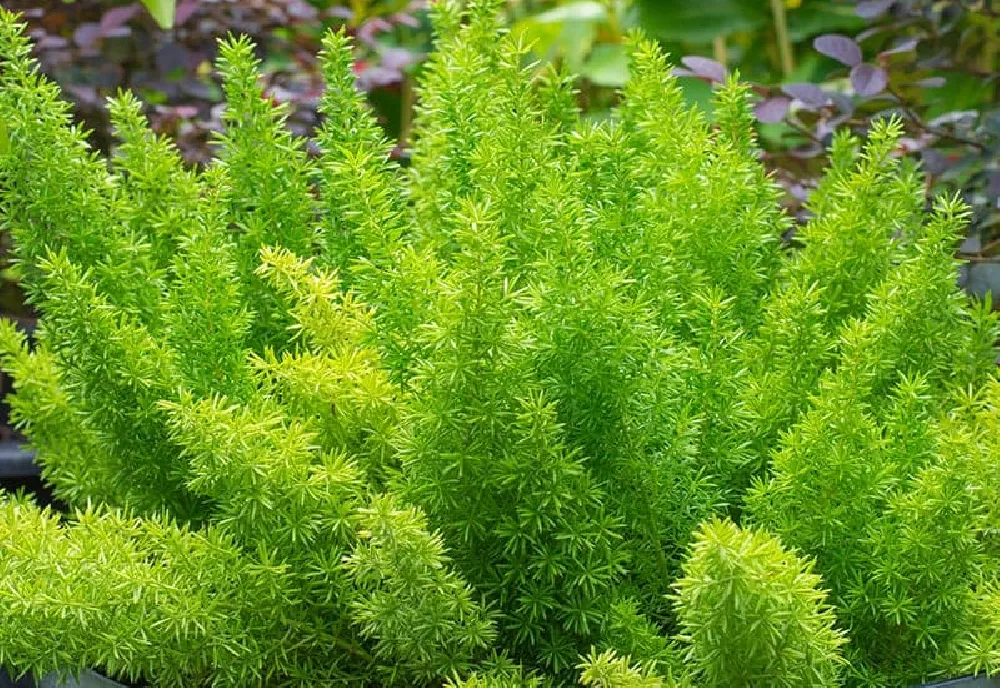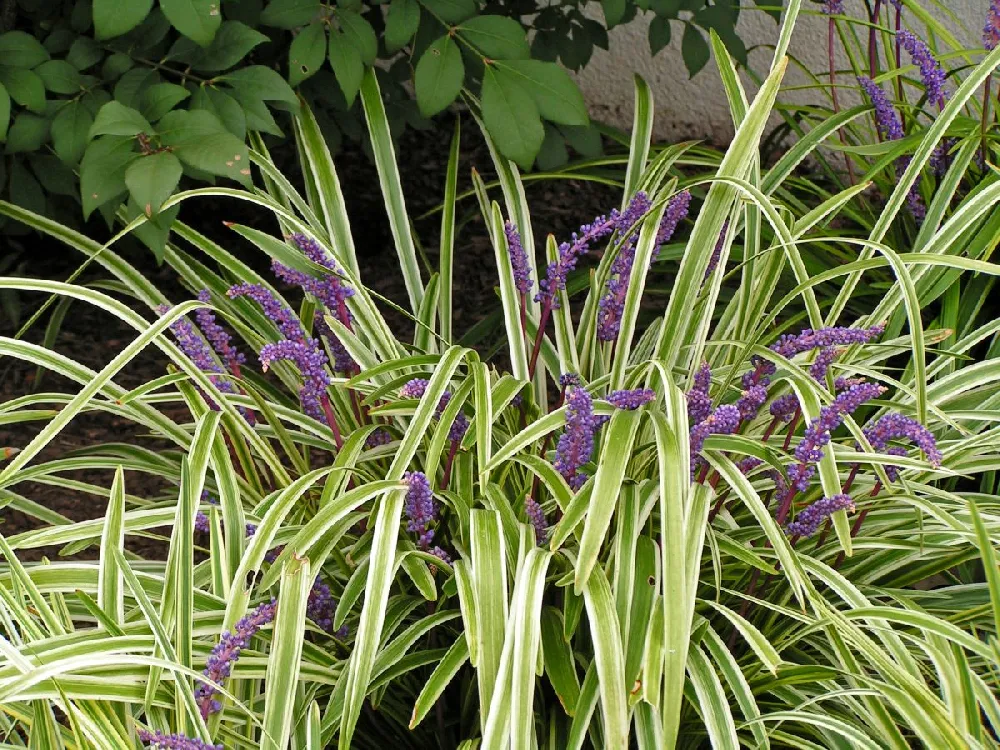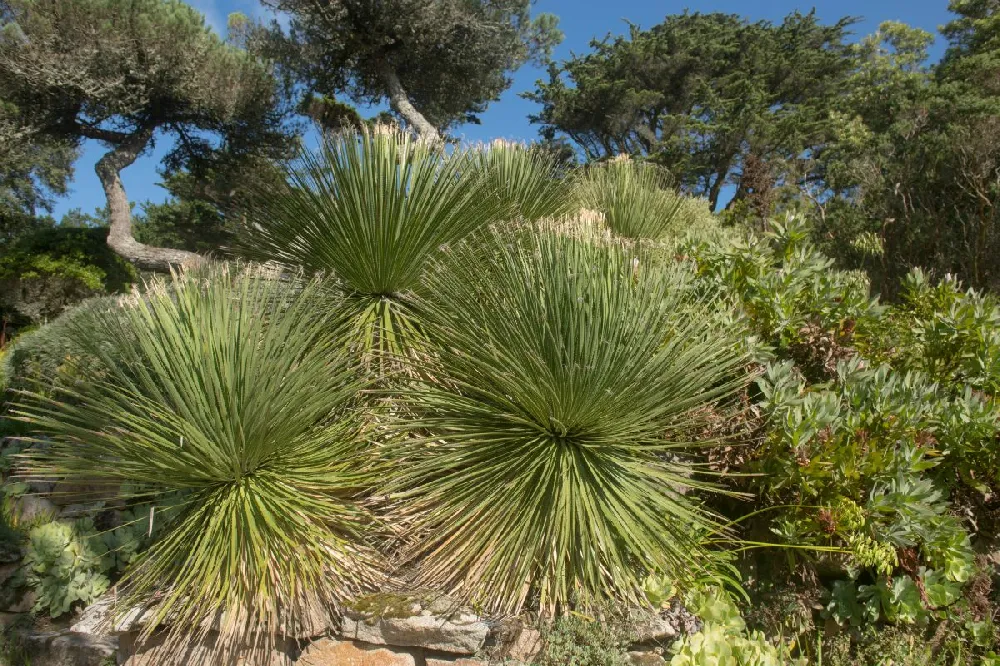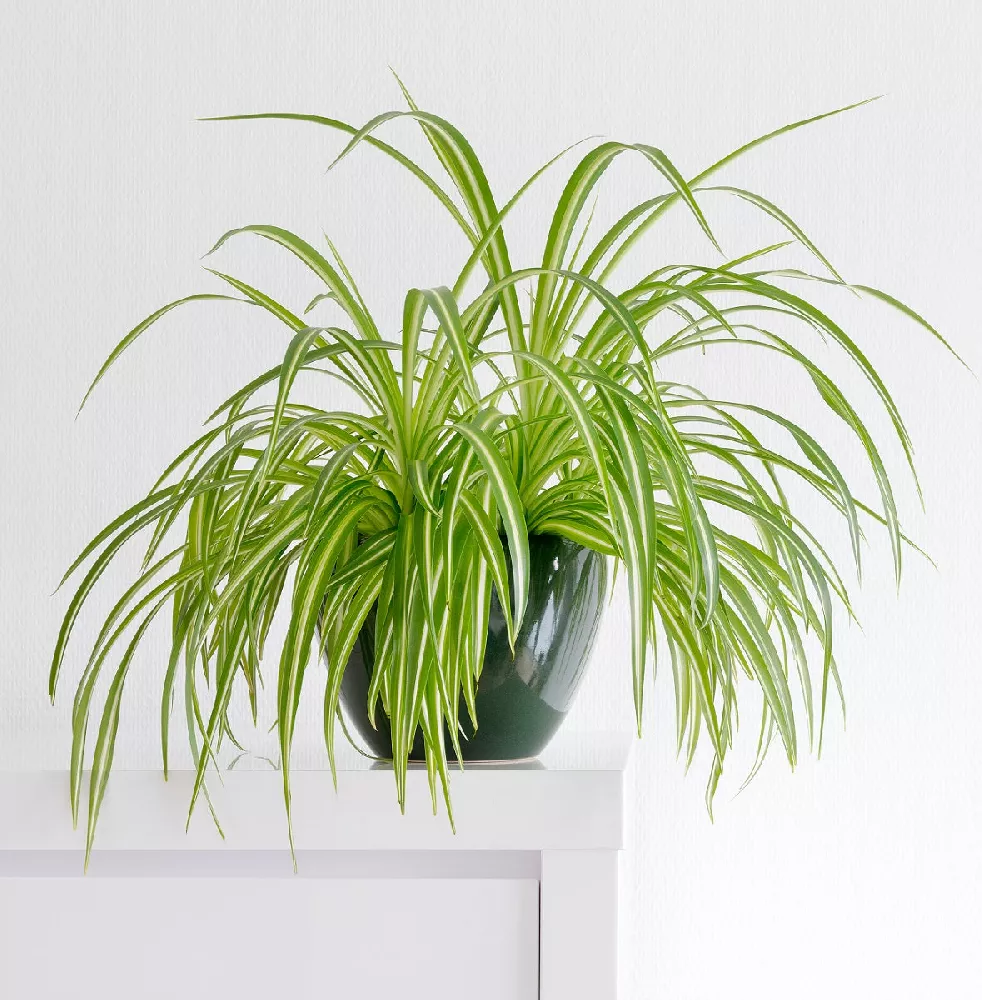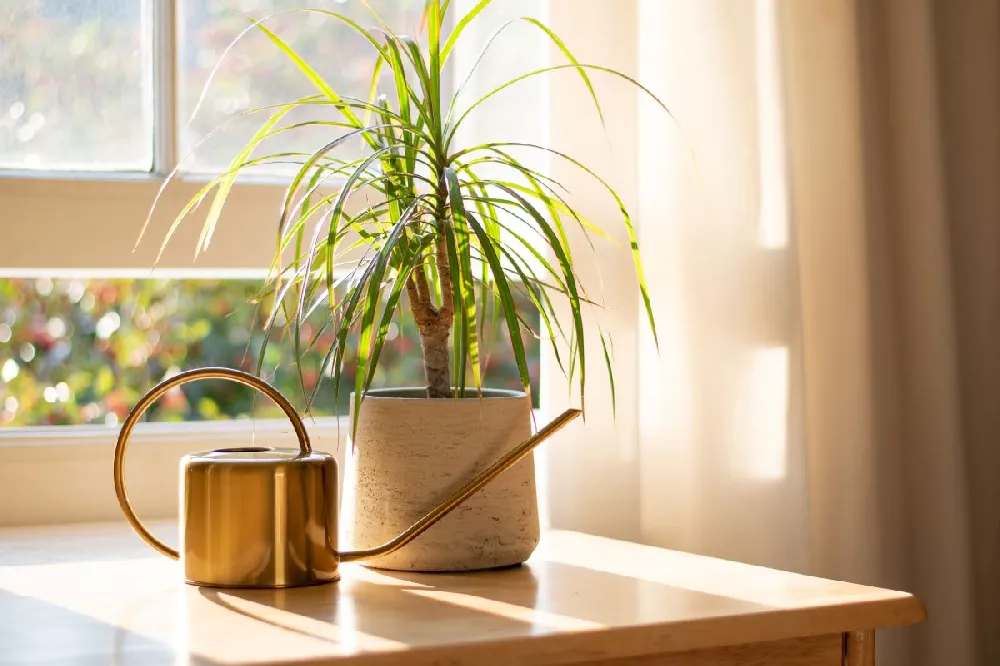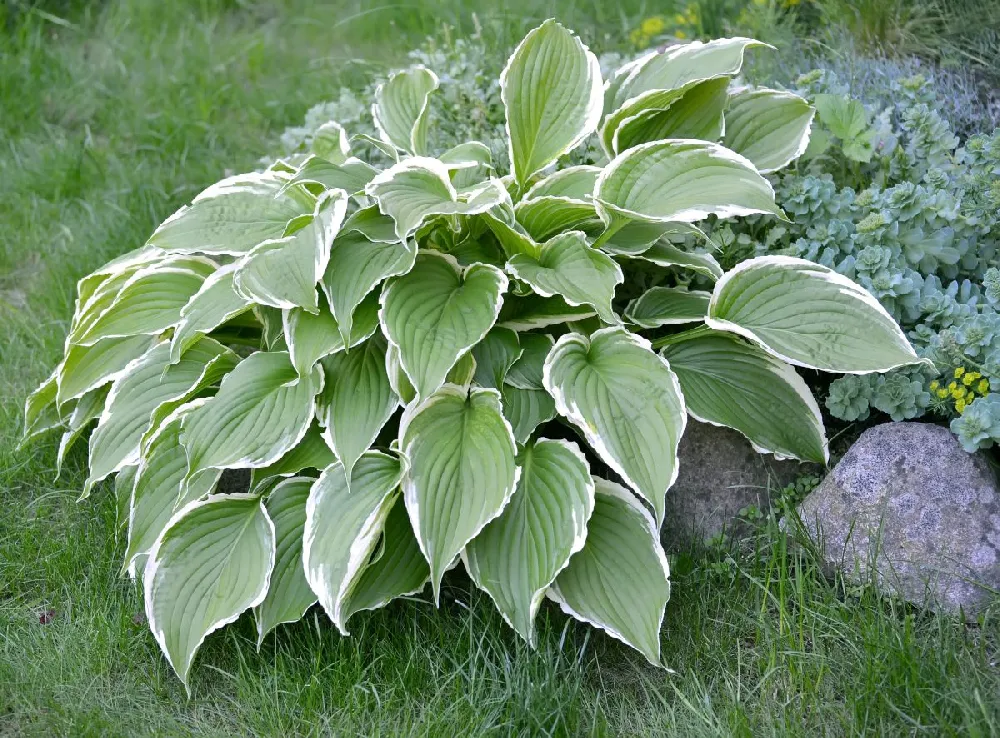Myers Asparagus Fern Plants for Sale - Buying & Growing Guide
Despite its name, the Myers asparagus fern is not actually a fern and it does not produce asparagus. But it does have many attractive qualities that make it a popular addition to gardens. Also known as plume asparagus or foxtail fern, this South African native adds texture and color to homes and gardens. Here are some other facts about the Myers asparagus fern:
- Can be grown indoors or outdoors
- Have a moderate salt tolerance and are well-suited for seaside gardening
- Are relatively low-maintenance and easy to care for
Enter your zip code to find nearby stores that may carry this plant.
Plant Care
Sunlight

Survives in full sun and partial shade but prefers shade. Direct sunlight can lead to leaf discoloration.
Watering
Water once or more weekly to keep soil moist. When indoors, mist leaves as well.
Fertilizing

Use organic materials like compost to increase soil nutrients. Apply a balanced fertilizer once per month.
Planting and Care
Planting instructions
When planting a Myers asparagus fern in the ground, choose a location that receives partial shade, particularly during the hottest part of the day in summer months. This fern tolerates a variety of different soils, including those with a moderate salt content. Mature Myers asparagus ferns have a spread of about 4 feet, so space them accordingly.
In USDA hardiness zones 9 and above, Myers asparagus ferns grow as perennials, but they grow as annuals in other zones. If planting in a container, use a well-draining potting soil and place in a location where it will receive indirect sunlight.
Watering and nutrients
As a native tropical plant, Myers asparagus ferns need a significant amount of moisture, although the plant will survive if the top few inches of soil dry out between waterings. Humidity is also key to keeping your Myers asparagus fern healthy, particularly indoors, where it tends to be drier. Mist indoor plants daily and keep a pebble tray nearby to increase water in the air. Fertilize asparagus ferns regularly during the spring and summer months with a balanced 10-10-10 plant food at half-strength.
Pruning
Myers asparagus ferns tend to grow quickly, so regular trimming is useful for helping the plants maintain their shape and avoid becoming overgrown. It’s important to note that mature asparagus ferns can develop sharp spines on their branches, so wear gardening gloves when pruning older plants. Prune back the stems of outdoor asparagus ferns in the spring to make way for new growth. If individual stems turn brown or yellow, you can trim them as well, although if you’re getting an excessive amount of yellow stems, it could be an indication that the plant needs more sunlight.
Pests and diseases
Indoor Myers asparagus ferns are susceptible to common houseplant pests including aphids and mites. Common symptoms of infestations include stunted growth, small holes or discolored spots on leaves, and defoliation. These infestations can be remedied easily with a soap and warm water solution or with insecticidal spray. For a severe infestation, you can cut the stems back to the soil line, and let new, healthier stems regrow. As for diseases, asparagus ferns are relatively tough, but keep an eye out for brown leaves, which are typically a sign of overwatering.
Harvesting and propagation
In late summer, Myers asparagus ferns bloom with small, white flowers and red berries. While these berries are not edible, they do contain the seeds to propagate more asparagus ferns. These berries can be harvested and planted to grow new ferns. Another way to propagate asparagus ferns is by dividing a plant at its roots, and replanting, making sure the root system is covered with well-draining soil. This is best done in the springtime.
Light
This plant enjoys bright indirect sunlight or dappled light. When grown indoors, it needs a good amount of bright light in order to thrive but should be kept out of direct sunlight where it will scorch. It can be acclimated to more light, but you should do this gradually.
When grown outside, position this plant in an area where it is semi-shaded. It will do well in a spot that is protected by the shade of other nearby shrubs and trees but still gets some light coming through at different times of the day. If you do decide to plant the asparagus fern in a sunny position, ensure that it is shaded during the afternoon when the sun is at its strongest. The tiny needles of the fern are susceptible to drying out or being burnt by too much light,
Temperature
This plant is hardy to USDA zones 9 to 11. When grown outdoors, it thrives in warm climates and will respond especially well to greenhouse conditions. The asparagus fern is ideally suited to life as a houseplant as it enjoys temperatures in the range of 70 degrees Fahrenheit, which is typically the temperature that many homes are kept at.
In the case of this plant, you can be confident that if you are comfortable with the temperature of your home, then your asparagus fern will be comfortable too. It can tolerate drops in temperature as low as 50 degrees Fahrenheit, but it will not respond well to consistently low temperatures. Be sure to keep it in warmer rooms in the house during winter and not leave it in disused rooms where the heating isn’t turned on.
Humidity
This plant thrives in moist air, so it’s essential that it lives in a humid environment. The plant will appreciate being grown in an outdoor climate, which is naturally humid, but if grown indoors as a houseplant, you will need to artificially create humidity, especially during the winter, when air typically becomes very dry due to indoor heating systems.
There are several ways you can increase the humidity around the plant, and probably the most popular method among plant lovers is to mist the plant with a water spray. The asparagus fern will need a daily misting to be kept happy, and while some plant owners enjoy doing this, others may find it too laborious. In this instance, you may prefer to use an electric humidifier that you can simply plug in and forget about until it needs refilling. An electric humidifier disperses tiny particles of water into the air to increase humidity in the whole room.
A cheaper way to achieve higher humidity for your plant is to use a pebble tray. Simply sit the plant on a tray of pebbles that are bathed in water. As the water evaporates from the pebbles, the air around the plant will become moister. Always be sure that the water level sits lower than the tallest pebbles to ensure water does not come into contact with the base of your plant pot; otherwise, the water may be absorbed by the soil through the drainage holes, and your plant may inadvertently become overwatered. You will need to keep track of the water level in your pebble tray, making sure it gets refilled frequently to ensure the humidity level remains consistent.
If your asparagus fern begins to droop or look as though it is drying out, it can usually be revived with a good misting. If you keep the asparagus fern outside in a greenhouse, it will respond well to the high humidity provided in this type of environment, and you will likely witness an abundance of growth.
Repotting
Asparagus ferns respond well to being root bound and should not need repotting very frequently. When young, they should be repotted every two years, but as they get older, they will be able to go longer between repotting.
When the root ball of your asparagus fern feels like it is bulging out of the pot, you know it’s time to repot it. Ease it out of its pot and place it into a new pot just one or two sizes bigger. Press new potting soil around the edges of the root ball, ensuring the base of the plant is at the same height as it was in its previous pot.
FAQs
How much sunlight do Myers asparagus ferns need?
When it comes to light, these plants are fairly adaptable. Myers asparagus ferns can grow in full sun, although they do best when they receive some shade, particularly during the hottest part of the day. Full, hot sunlight can cause the fern’s leaves to turn yellow, when they should normally be a bright, emerald green. If you notice your fern’s leaves turning yellow, try moving the plant to a location with more shade.
Are Myers asparagus ferns annuals or perennials?
Technically, Myers asparagus ferns are evergreen perennials, meaning they will grow back year after year. However, this depends on the growing location. Because Myers asparagus ferns are native to a tropical climate, their roots cannot survive freezing temperatures. Therefore, if left outdoors over the winter in a USDA hardiness zone below a 9, Myers asparagus ferns will die. To prevent this, plant your ferns in a container and overwinter them indoors.
Are Myers asparagus ferns toxic to pets?
Yes. Myers asparagus ferns are toxic to humans and common household pets if ingested. The fern’s red berries contain sapogenin, a steroid found in many plants. Ingesting these berries can cause vomiting, diarrhea, and abdominal pain. Additionally, the fern’s leaves contain sap that may cause skin and eye irritation. We recommend wearing gloves when handling a Myers asparagus fern and keeping the plant out of reach of children and pets.
How large do Myers asparagus ferns grow?
With proper care and sunlight, a Myers asparagus fern can grow to be about 2 to 3 feet wide, and 2 to 4 feet in length. When planted in the ground, the fern will extend horizontally. Those grown in containers or hanging baskets will hang vertically, creating a beautiful cascading effect. Despite their rapid growth, Myers asparagus ferns can tolerate being slightly pot-bound. You should plan on repotting your asparagus fern about once every two years.
